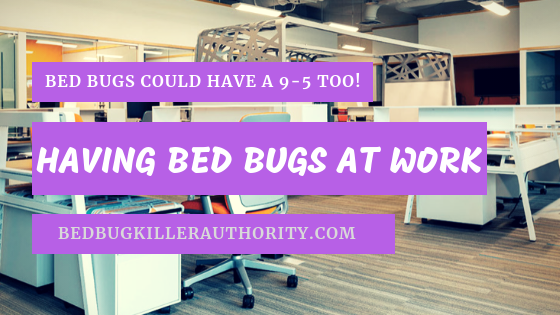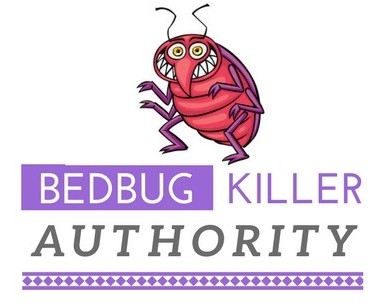Working With Bed Bugs
Does going to work give you that creepy, crawly feeling? For many of us, perks like free coffee and office snacks make the office feel like a second home. For mice, cockroaches, and other common pests, they make it a paradise. I bet you don’t go to work thinking you will be dealing unwanted pests including bed bugs, right. I hate to be the bearer of bad news but, bed bugs can definitely be at your 9 to 5 also.
So how can HR departments best handle situations where you have uninvited guests?
In this article we’ll dive into the dirty work of handling office infestations. With an understanding of how these pests thrive and how to work with employees to eliminate them, you can squash problems before they get out of hand.
Cleanliness Is Compliance
Providing workers with a pest-free work environment isn’t just a nice thing to do, it’s actually a compliance necessity. While most associate the U.S. Occupational Safety and Health Act with construction and other blue-collar industries, the law requires all employers to maintain a hazard-free workplace.
As you may or may not know but, bed bugs don’t spread disease, their unchecked presence can be interpreted as a violation of federal law.
If you do have an infestation, chances are that employees are talking about it. While that might get under your skin, keep in mind that the National Labor Relations Act prohibits employers from cracking down on these discussions.
Though the law is best known for enshrining workers’ right to organize, it also protects their ability to openly discuss working conditions. All the more incentive for HR to spring into action after just a single pest sighting.
Things To Look For
Prevention is key. If you know what to look for, you can stop problems before they take root. Below are a few seemingly minor things worth keeping an eye on.
Food: Everyone loves an office birthday party or a potluck dinner. But when food is left out overnight, it serves as open invitation to rodents, flies, and other hungry pests that might want to call your office home. Ask employees to clean up promptly after events, and keep leftovers in the fridge no longer than a week.
Moisture: Water is essential to life, which includes those creatures we’d rather do without. Always be on the lookout for dripping pipes, roof leaks, or just a general musty smell. In addition to attracting creatures that prefer high-moisture environments, these conditions might also be indicative of a more dangerous, invisible threat: mold.
Openings: Feel a draft? Pests are adept at finding ways into your office, and cracks or voids that are a quarter-inch or greater in size offer the perfect opportunity. Check for spaces under exterior doors, and ask your IT team look for and seal up any large holes that were made for network cables and other utilities.
While individual employees’ cleanliness will always vary, there are a few minor things that HR can do to encourage better habits. For one, remind employees to make use of the office refrigerator instead of storing (and potentially forgetting about) food in their desk drawers.
You can also hold spring cleaning parties, where employees are treated to refreshments and snacks while shredding unneeded documents, getting rid of clutter, and otherwise just cleaning their cubicle or desk.
Pest Control
Even the cleanest office can run into pest control issues. If an employee reports seeing a rodent or insect, ask building management or a specialist to investigate the matter. More often than not, they’ll be able to identify the source and recommended treatment. Simple enough, right?
But in many cases, there isn’t a clear, treatable source of an infestation. Which brings us to our next dilemma: when employees commute to the office, they aren’t necessarily arriving alone. Smaller insects, like fleas, lice, or worst yet, bed bugs, travel by hitching a ride on their unfortunate hosts. Like the flu, these bugs are highly communicable—meaning a single case can quickly turn into a company-wide pandemic.
You know the drill: if it’s contagious, ask employees to work from home or take leave. But unlike sniffles or weezing, the symptoms of those suffering from these near-invisible pests aren’t readily apparent.
If you’re lucky and an afflicted employee comes forward on their own, handle the situation with the utmost sensitivity and confidentiality. Work with the individual’s manager and arrange for them to work from home or take paid leave for enough time address their personal situation.
But what if a colleague comes forward suspecting an peer has a problem? In cases like these, don’t act hastily. False accusations might be the result of workplace bullying and in worse cases, could be construed as discrimination. Ask the employee’s manager if he or she has seen similar evidence, and if so, only then approach the afflicted individual.
Calmly and privately ask if they are suffering from a communicable condition, remind them of your duty to provide safe working conditions other employees, and inform the employee of their telecommuting or leave options.
Dealing With Bed Bugs
If there’s one pest that keeps HR professionals up at night, it’s bed bugs. The sighting of just one of these half-centimeter sized critters or their bites can be enough to shutter an entire workplace. In a notable case last summer,Buzzfeed required its entire office to work from home so their office space could be treated.
So why did we dedicate an entire section to one pest? Bed bugs can live without a meal (or in other words, you) for over 18 months, so simply asking an employee to work from home won’t be enough. You’ll need to ask a specialist to come to the office and inspect the property with the help of a bug-sniffing dog. If the search yields anything, you’ll likely have to fumigate the entire office.
If an employee voluntarily comes forward as a potential source of the infestation, you might also consider paying for their home to be fumigated. Because the treatment can cost as much as $7 per square foot, employees may not be readily able to cover it on their own. Depending on the severity of the infestation, a specialist may recommend other less invasive treatments, like freezing or steaming bed bug hideouts.
In cases the above, a flexible telecommuting policy can help HR teams stop potential infestations in their tracks. Once considered a novelty, the ability to work from home is now considered a baseline expectation among many in the workforce.
Thanks For Reading,








